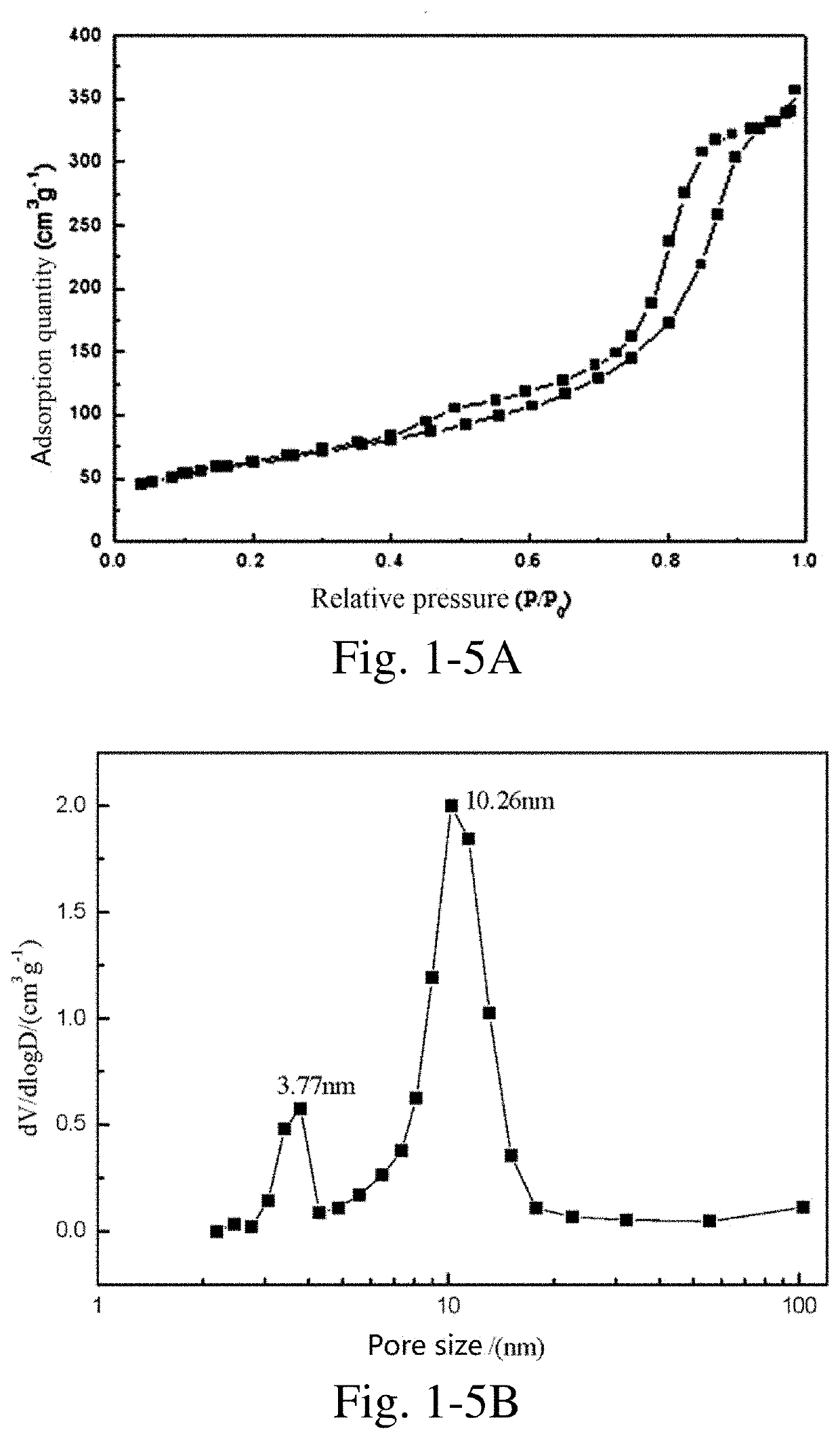Carbon-Coated Transition Metal Nanocomposite Material, its Preparation and Application Thereof
a transition metal and composite material technology, applied in the direction of hydrocarbon preparation catalysts, metal/metal-oxide/metal-hydroxide catalysts, catalyst activation/preparation, etc., can solve the problems of low mass transfer efficiency, low high catalytic activity and poor stability of transition metal nano materials, so as to improve mass transfer efficiency and ensure material safety , the effect of improving the stability of the material
- Summary
- Abstract
- Description
- Claims
- Application Information
AI Technical Summary
Benefits of technology
Problems solved by technology
Method used
Image
Examples
example 1-1
[0392]10 g of nickel acetate and 10 g of citric acid were weighed, added into 30 mL of deionized water, stirred at 70° C. to obtain a homogeneous solution, and the solution was continuously heated and evaporated to dryness to obtain a precursor.
[0393]The precursor was placed in a porcelain boat, then the porcelain boat was placed in the constant-temperature zone of a tube furnace, nitrogen was introduced at a flow rate of 100 mL / min, heated to 650° C. at a heating rate of 5° C. / min, kept at the temperature for 2 h, and then the heating was stopped. The resultant was cooled to room temperature in a nitrogen atmosphere to obtain a carbon-coated nickel nanocomposite material.
example 1-2
[0394]10 g of nickel acetate and 20 g of citric acid were weighed, added into 50 mL of deionized water, stirred at 80° C. to obtain a homogeneous solution, and the solution was continuously heated and evaporated to dryness to obtain a precursor.
[0395]The precursor was placed in a porcelain boat, then the porcelain boat was placed in the constant-temperature zone of a tube furnace, nitrogen was introduced at a flow rate of 150 mL / min, heated to 600° C. at a heating rate of 5° C. / min, kept at the temperature for 2 h, and then the heating was stopped. The resultant was cooled to room temperature in a nitrogen atmosphere to obtain a carbon-coated nickel nanocomposite material.
example 1-3
[0396]10 g of cobalt acetate and 30 g of citric acid were weighed, added into 50 mL of deionized water, stirred at 80° C. to obtain a homogeneous solution, and the solution was continuously heated and evaporated to dryness to obtain a precursor.
[0397]The precursor was placed in a porcelain boat, then the porcelain boat was placed in the constant-temperature zone of a tube furnace, nitrogen was introduced at a flow rate of 150 mL / min, heated to 600° C. at a heating rate of 5° C. / min, kept at the temperature for 2 h, and then the heating was stopped. The resultant was cooled to room temperature in a nitrogen atmosphere to obtain a carbon-coated cobalt nanocomposite material.
PUM
| Property | Measurement | Unit |
|---|---|---|
| thickness | aaaaa | aaaaa |
| thickness | aaaaa | aaaaa |
| particle size | aaaaa | aaaaa |
Abstract
Description
Claims
Application Information
 Login to View More
Login to View More - R&D
- Intellectual Property
- Life Sciences
- Materials
- Tech Scout
- Unparalleled Data Quality
- Higher Quality Content
- 60% Fewer Hallucinations
Browse by: Latest US Patents, China's latest patents, Technical Efficacy Thesaurus, Application Domain, Technology Topic, Popular Technical Reports.
© 2025 PatSnap. All rights reserved.Legal|Privacy policy|Modern Slavery Act Transparency Statement|Sitemap|About US| Contact US: help@patsnap.com



